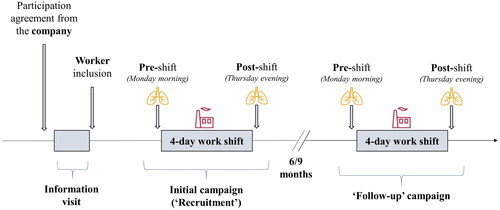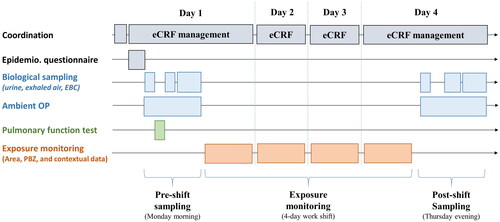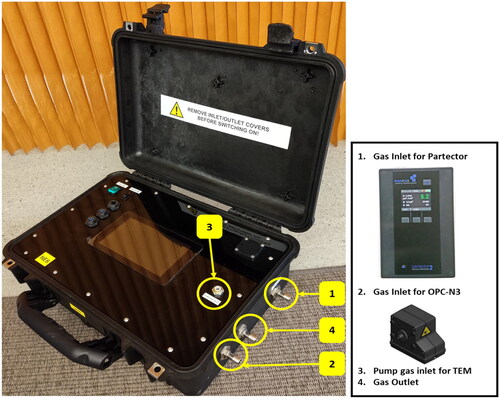Figures & data
Figure 1. Main steps of the NanoExplore cohort construction and follow-up. An information visit conducted beforehand will serve to collect company-related information, inform and enroll volunteer participants into the cohort. Participants’ data on exposure and health outcomes will be collected during the field campaigns. Both the initial (‘recruitment’) and 6 or 9-month follow-up campaigns will be conducted following similar procedures. Airborne exposure to ENMs (symbol: plant) will be monitored during a 4-day work shift. Biological matrices (i.e. EBC, exhaled air and urine; symbol: lungs) for biomarker quantification will be sampled in pre- and post-shift.

Figure 2. Structure and timeline of the NanoExplore campaign in the field. The field campaign lasts four days. The electronic epidemiological questionnaire is filled once, in the beginning of the campaign. Biological sampling takes place twice, i.e. in pre-shift on the 1st day and post-shift on the last day of the campaign. Pulmonary function test completes the pre-shift sampling. Exposure monitoring is conducted over a 4-day 8-hour work shift. The overall coordination is ensured using workers’ individual electronic Case Report Forms (eCRFs). EBC: exhaled air condensate, OP: oxidative potential

Table 1. Effect biomarkers measured in the NanoExplore cohort.
Figure 3. The NanoExplore kit for exposure monitoring. The NanoExplore kit includes three built-in modules: the Optical Particle Counting module (OPC), the nanoparticle sensor (Partector 2), and the transmission electronic microscopy (TEM) particle head sampler.

Table 2. Exposure biomarkers measured in the NanoExplore cohort.
